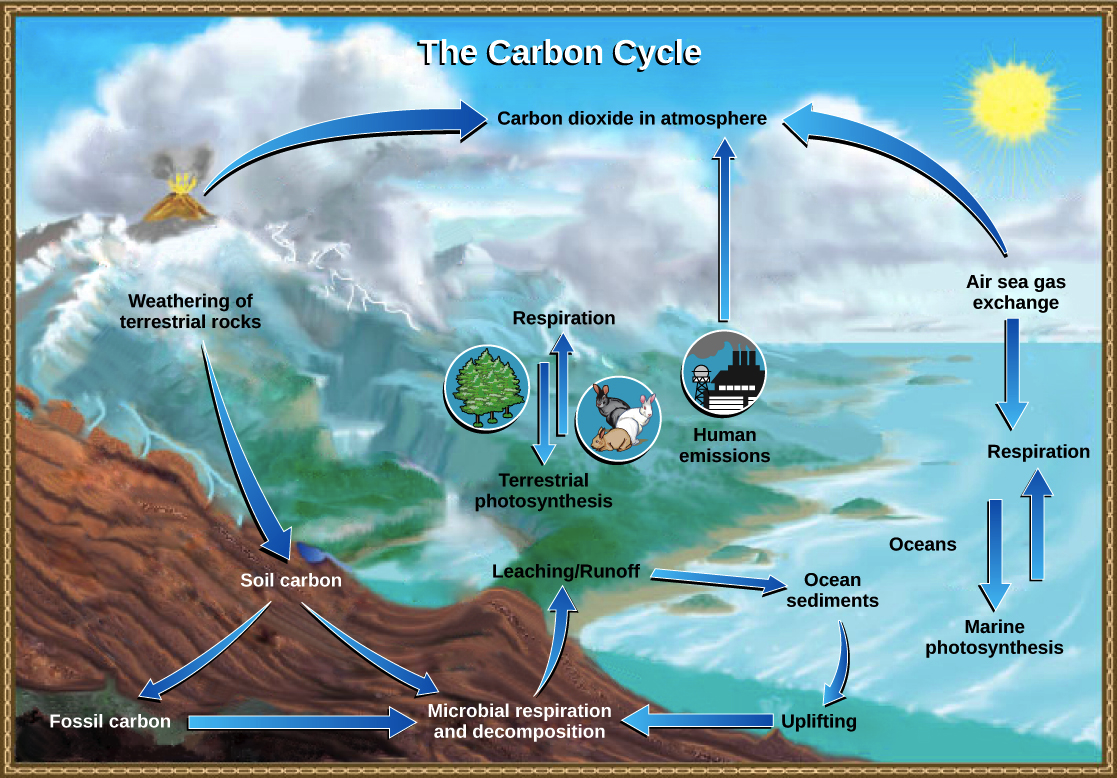The natural process of rock weathering, which typically acts as a carbon dioxide (CO2) absorber, has been discovered to also contribute significantly to CO2 emissions, potentially rivaling volcanic activity. This revelation has implications for climate change.
Absorption and Release of CO2
When rocks formed from ancient plant or animal remains weather, they can absorb CO2 through a reaction between specific minerals and rainwater. This process can help counterbalance CO2 emissions from volcanic activity and maintain Earth’s habitable surface.
However, a recent study has found that weathering rocks can also release CO2 into the atmosphere, similar to volcanic processes. This occurs when rocks containing fossilized remnants of ancient marine life are thrust to Earth’s surface, exposing organic carbon to oxygen in the air and water, ultimately releasing CO2. It’s important to note that weathered rocks can be a source of CO2, but not in the same way as other CO2 sources.
Measuring CO2 Release
To measure CO2 release, researchers used a tracking element, rhenium, which is released into water when organic carbon reacts with oxygen. Collecting water samples from rivers worldwide was challenging but necessary to upscale the findings.
To expand the study’s scope to the Earth’s surface, researchers focused on two aspects. First, they examined the amount of carbon present in surface rocks. Second, they identified regions where rapid weathering processes occurred, often due to erosion in mountainous areas.
“The challenge is how to combine global maps with river data. We put all the data into a supercomputer at Oxford to simulate the interaction between physical, chemical, and hydrological processes. This allowed us to estimate the total carbon dioxide released from rocks into the air,” explained Jesse Zondervan, one of the study’s researchers from the University of Oxford.
The study’s results allow for comparisons between the amount of CO2 absorbed by rock weathering and that absorbed by silicate minerals. It also helps identify regions where rocks serve as a CO2 source.
CO2 Emissions
The study pinpointed hotspots of CO2 release in mountains with high uplift rates, which expose sedimentary rocks. The global CO2 release from weathering was estimated to be around 68 megatons of carbon per year.
While this amount is approximately 100 times less than CO2 emissions from fossil fuel combustion, it’s on par with the CO2 emissions from volcanoes worldwide. This signifies the critical role that mountains play in Earth’s natural carbon cycle.
These natural CO2 emissions might have occurred throughout Earth’s history during periods of significant mountain formation, releasing higher amounts of CO2 and influencing the global climate of those times.
The lingering question is whether these natural CO2 emissions will increase in the coming years. Researchers currently lack the means to predict this, but it remains an area for future investigation.
“While these emissions are smaller than current human emissions, this understanding can be used to predict carbon better,” concluded Zondervan.
Conclusion
The study sheds light on the complex role of rock weathering in the Earth’s carbon cycle. It highlights that while rocks can absorb and release CO2, the natural process serves as a key component in Earth’s carbon balance. Understanding these natural emissions can contribute to more accurate predictions and assessments of the planet’s carbon dynamics.

